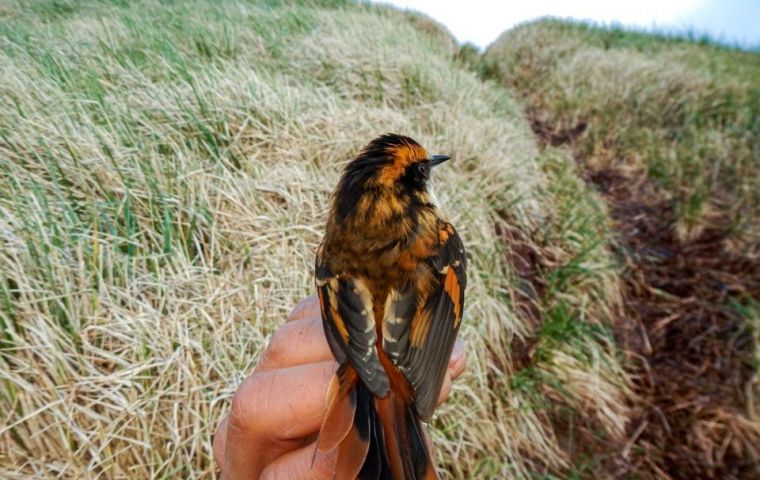MercoPress. South Atlantic News Agency
Chilean scientists discover new bird species in sub-Antarctic island, 100km south of Cape Horn
 The small brown bird weighs around 16 grams (roughly half an ounce) and has black and yellow bands along with a large beak
The small brown bird weighs around 16 grams (roughly half an ounce) and has black and yellow bands along with a large beak Amazed Chilean scientists have identified a new bird species, the Sub-Antarctic rayadito in the Diego Ramirez Islands that lie 100 kilometers from southern Chile's Cape Horn.
The small brown bird weighs around 16 grams (roughly half an ounce) and has black and yellow bands along with a large beak. The finding, which was reported in the science journal Nature, highlights the significance of observing some of the most remote places on earth.
The Diego Ramirez Archipelago is not only geographically isolated, it also lacks terrestrial mammalian predators and woody plants, the study said.
The small group of sub antarctic islands have a tundra climate, meaning that tree growth in the archipelago is hindered by bitter temperatures and short growing seasons.
The discovery comes as a surprise because the bird — found nesting in a place with no woody plants — resembles a rayadito species that inhabits the forests of southern Patagonia and lives in trunk cavities.
“There are no bushes and no woodland species, literally in the middle of the ocean a forest bird has managed to survive,” Ricardo Rozzi, an academic from Chile's University of Magallanes and the University of North Texas and director of the Cape Horn International Center for Global Change Studies and Biocultural Conservation (CHIC)
During the course of the research, which spanned six years, scientists captured and measured 13 individuals on the island.
”The Birds from the Diego Ramirez population were significantly heavier and larger (with a longer and wider bill and longer tarsi), but they had a significantly shorter tail,“ the study said.
With the finding, researchers said the study emphasized ”the need to monitor and conserve this still-pristine archipelago devoid of exotic species” brought in from elsewhere, usually by humans, which often then prey on local fauna.
In 2017, the government of Chile announced the creation of the Diego Ramírez Islands-Drake Passage Marine Park, protecting the Diego Ramirez Islands.
The park includes 140,000 square kilometers of Chile’s southern waters, starting in the Cape Horn and extending south to the 200 miles of Chile’s economic zone towards Antarctica.




Top Comments
Disclaimer & comment rulesCommenting for this story is now closed.
If you have a Facebook account, become a fan and comment on our Facebook Page!